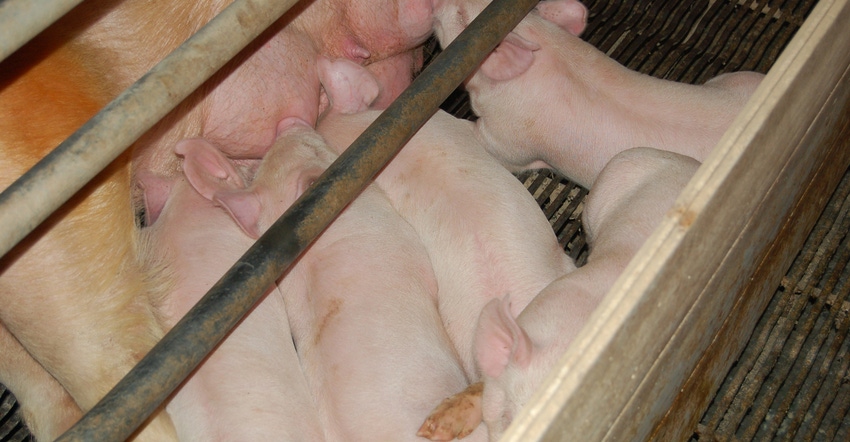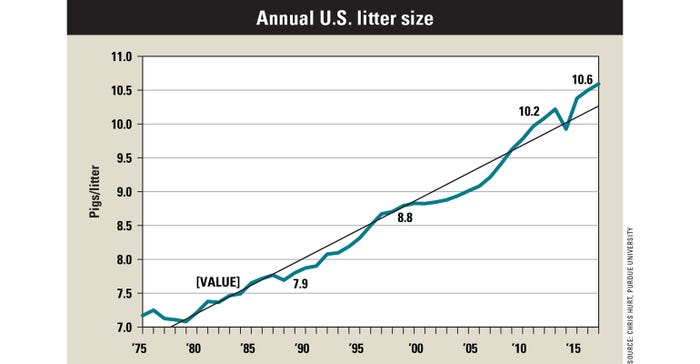February 6, 2018

By Chris Hurt
It has been a long time now, but back when I was a full-time hog farmer in the late 1970s, I averaged about seven pigs weaned per litter. I was a little below average, but not by much.
At that time, if you wanted to raise more hogs, you got more sows. It didn’t occur to us that we might be able to intensify our management and focus on getting more pigs from each of those litters.
Increasing pigs per litter makes a lot of economic sense. There are a lot of costs to owning a sow, such as the money invested in her, interest on that money, labor, feed and housing. There is a big investment in each litter. Therefore, cost per pig produced is much lower if a sow has 10 pigs in her litter compared to my seven pigs.
Ramp up efficiency
This message was received by our great hog production managers, and they have been pushing pigs weaned per litter higher since. In 1980, the average U.S. litter size was 7.2 pigs. That rose to 7.9 pigs in 1990 and 8.8 pigs in 2000. In 2017, it was 10.6 pigs. That is a 47% increase in the 37 years from 1980, or an average increase of nearly 1.3% in pigs per litter per year.
The rate of change may have increased since 2009. From 2009 to 2017, pigs per litter has increased above the long-term trend.

There is another event that shows up as a big drop in litter size in 2014. You will remember the porcine epidemic diarrhea virus that hit many farms hard. Pigs per litter dropped to 9.9 in 2014 from 10.2 the previous year. The industry recovered from PEDV by 2015, and pigs per litter has continued to march higher.
Future trend
Can this long-term trend of increasing the number of pigs weaned per litter continue? The answer seems to be yes. European litter sizes tend to be larger than in the U.S., proving it can be done.
Genetic improvement is ongoing, and hog producers have a lot of economic incentives to continue growing the size of each litter. Another supporting factor is that long-term trends in agriculture tend to stay in place.
It’s a good thing I quit farrowing sows, because I would probably lower the national average of pigs per litter for everyone.
Hurt is a Purdue University Extension agricultural economist and marketing expert. He writes from West Lafayette, Ind.
You May Also Like




